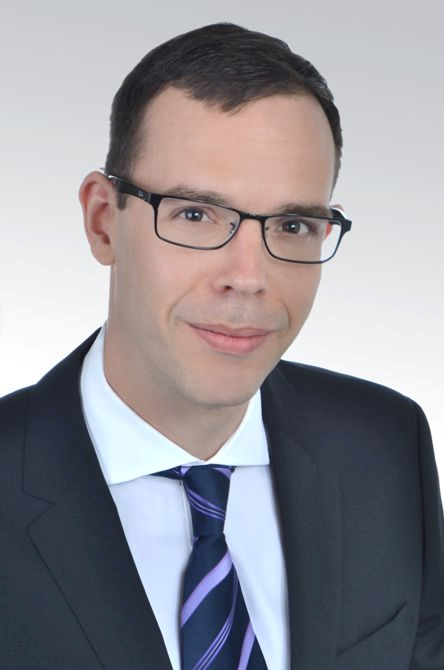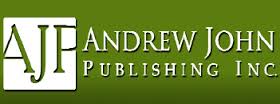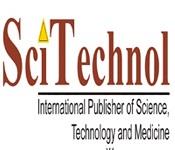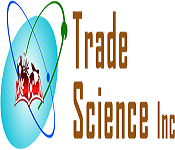Theme: Advanced catalysis for Energy Conversion, Chemical Transformation, and Computational Catalysis
ICCP 2018
Conference series LLC Ltd welcomes you to attend the International Conference on Catalysis and Pyrolysis during November 05-06, 2018 in San Francisco, USA. We cordially invite all the participants who are interested in sharing their knowledge and research in the area of Catalysis and Pyrolysis and its applications with the theme Advanced Catalysis for Energy Conversion, Chemical Transformation, Computational Catalysis.
This International Conference on Catalysis and Pyrolysis (ICCP 2018) meeting creates a platform for Policy-makers, Scientists, representatives and decision makers in Catalysis and pyrolysis to present their latest catalytic and pyrolytic research and learn about all the important developments in catalysis and pyrolysis research. The applications of catalysis and pyrolysis include Catalyst Design, Synthesis Reaction Dynamics and Operando Characterization, Hydrogen Production, Waste treatment, Environmental, Geochemical, Biological, Medical, Forensic and Energy production. ICCP-2018 is an excellent opportunity for the delegates from Universities and Institutes to interact with the world class Scientists. Major topics discussed are Chemical Reaction Engineering, Kinetics and catalysis, Catalysis for Chemical Synthesis, Biocatalysis, Biotransformation, Organometallic catalysis and Organocatalysis, Spectroscopy in Catalysis, Photocatalysis and Nano Catalysis, Environmental and green catalysis, Advances in Catalysis, Polymer Engineering, Pyrolysis, Biomass, Characterization of pyrolysis reaction and applications of analytical pyrolysis.
Target Audience:
- Target Audience will be personnel from both industrial and academic fields which include; CEOs, COOs, Directors, Vice Presidents, Co-directors, Chemists, Managing Directors, Industry Safety Officers, Doctorates, Professors, Post Doctorate Fellows, Vendors of Consumer Products/ Managers, Industrial Scientists, Students from the related fields.
Details of Catalysis Conferences 2018 in USA:
Conference Series LLC Ltd is organizing Catalysis Conferences in 2018 at San Francisco, USA. We organize Chemistry Meetings in the fields related to Electrochemistry, Catalysis, Chemical Engineering, Polymer Chemistry, Green Catalysis, Polymer Catalysis, Synthesis polymers, Green Chemistry, Environmental Chemistry, Chemical Science, Kinetics and catalysis, Electrocatalysis, Energy conversion, Biocatalysis, Biotransformation, Organometallic catalysis, Organ catalysis, Spectroscopy, Photocatalysis, Nano Catalysis, Computational Chemistry, Pyrolysis, Biomass, Sustainable Chemistry, Heterogeneous catalysis, Homogeneous catalysis, Methodology and Reactions, Organic Chemistry, Applications of analytical pyrolysis and Characterization of pyrolysis reaction.
|
Conference Name |
Place |
Date |
|
San Francisco, USA |
November 5-6, 2018 |
Track 1: Chemical Reaction Engineering
Catalysis, as a key and enabling technology, plays an increasingly important role in fields ranging from energy, environment, and agriculture to health care. Rational design and synthesis of highly efficient catalysts have become the ultimate goal of catalysis research. In the field of chemical industry and industrial research, catalysis plays an imperative role. Different catalysts are in continual progress to attain economic, political and environmental desire. When using a catalyst it can swap a polluting chemical reaction with a more environmentally friendly alternative. Today, and in the future, this can be vital for the chemical industry. In addition, it’s important for a company/researcher to pay attention to market development. Some of the large chemical processes that use catalysis today are the production of methanol and ammonia.
Related Conference:
International Conference on Chemical and Biochemical Engineering, June 7-8, 2017 Milan, Italy; 6th International Conference on Petroleum Engineering, June 29-July 01, 2017, Madrid, Spain;; 7th World Congress on Petrochemistry and Chemical Engineering, November 13-15, 2017, Atlanta, USA; 6th International Conference on Chemistry and Chemical Process February 13-14, 2017 Italy, Rome; 18th International Conference on Chemical Engineering and Process Technology, Istanbul, Turkey, January 25 - 26, 2017; 4th Annual International Conference on Chemistry, Chemical Engineering and Chemical Process, 18 - 19 January 2017,Singapore; 22nd International Chemical and Process Engineering Congress August 28-31, 2017, Prague, Czech RepublicInternational Conference on Chemical and Biochemical Engineering, June 7-8, 2017 Milan, Italy; International Conference on Renewable Energy and Resources, July 24-26, 2017, Vancouver, Canada; Polymer Science Conferences, May 8-9, 2017 Barcelona, Spain 23rd International Congress on chemical and process Engineering August 14-16 2017, Prague, Czech Republic; 15th International Conference on Chemical and Biochemical Engineering Beijing, China March 20-22, 2017; The 16th International Meeting on Chemical Sensors July 17–19, 2017 ,Ramada Plaza JeJu, Jeju Island, Korea.
Track 2: Kinetics and catalysis
Chemical kinetics is the study of rates of chemical processes. It includes analysis of how different tentative conditions can sway the speed of a chemical reaction and produce information about the reaction's mechanism and transition states, as well as the construction of mathematical models that can describe the characteristics of a chemical reaction. Chemical kinetics is vital for understanding a number of processes. Chemical Kinetics and Catalysis meets this challenge and provides an appropriate text for the next generation of scientists in this field.
Related Conference:
15th International Conference on Chemical and Biochemical Engineering Beijing, China March 20-22, 2017; The 16th International Meeting on Chemical Sensors July 17–19, 2017, Ramada Plaza JeJu, Jeju Island, Korea. Conference CATALYSIS FOR RENEWABLE SOURCES2017, 04-08 Sep 2017 Gabicce Mare, Adriatic; 4th International Conference on Physics September 17-18, 2018 Berlin, Germany ;2nd International Conference on Atomic and Nuclear Physics Nov 08-09, 2017 Las Vegas, Nevada, USA 3rd International Conference on Theoretical and Condensed Matter Physics October 19-21, 2017 New York, USA International Conference on Chemical and Biochemical Engineering, June 7-8, 2017 Milan, Italy . 7th World Congress on Petrochemistry and Chemical Engineering, November 13-15, 2017, Atlanta, USA; 3rd Annual Congress and Expo on Biofuels and Bioenergy, April 27-28, 2017 Dubai, UAE; 23rd International Congress on chemical and process Engineering August 14-16 2017, Prague, Czech Republic.
Track 3: Catalysis for Chemical Synthesis
This field amalgamate facet of organic, organometallic, and inorganic chemistry. Synthesis forms a considerable component of most programs in this area. Mechanistic scrutiny are often undertaken to discover how an unexpected product is formed or to rearrange the recital of a catalytic system. Because synthesis and catalysis are essential, to the construction of new materials, Catalysts are progressively used by chemists busy in fine chemical synthesis within both industry and academia. Today, there prevail huge choices of high-tech catalysts, which add enormously to the repertoire of synthetic possibilities. However, catalysts are intermittently fickle, sometimes grueling to use and almost always require both skill and experience in order to achieve optimal results
Related Conference:
2nd International Conference on Atomic and Nuclear Physics Nov 08-09, 2017 Las Vegas, Nevada, USA 3rd International Conference on Theoretical and Condensed Matter Physics October 19-21, 2017 New York, USA International Conference on Chemical and Biochemical Engineering, June 7-8, 2017 Milan, Italy . 7th World Congress on Petrochemistry and Chemical Engineering, November 13-15, 2017, Atlanta, USA; 3rd Annual Congress and Expo on Biofuels and Bioenergy, April 27-28, 2017 Dubai, UAE; 23rd International Congress on chemical and process Engineering August 14-16 2017, Prague, Czech Republic;
Track 4: Energy Conversion, Biocatalysis, and Biotransformation
Biocatalysis has become a substitute method of choice for the production of fine chemicals at high yields and excellent selectivity under mild condition. The impact of biocatalysis in the future will be the enlarge of ability to use enzymes to catalyze chemical reactions in industrial processes, including the manufacture of drug material, flavors, fragrances, electronic chemicals, polymers—chemicals that literally impact almost every facet of your life. In adopting biocatalysis as a mainstream technology for chemical production, is introducing a technology that is greener, reduces pollution and cost, and creates greater sustainability Environmental catalysis and Nano Catalysis.
Biotransformation is a chemical modification (or modifications) of chemical compounds such as nutrients amino acids, toxins, and drugs in the body by an organism ending in the production of mineral compounds like CO2, NH4+, H2O or water-soluble compounds so that it can be easily eliminated from the body
Related Conference:
2nd International Conference on Nucleic Acids, Molecular Biology & Biologics , August 31-September 01, 2017 Philadelphia, USA; 10th International Conference and Exhibition on Metabolomics Oct 16-17, 2017 Baltimore, USA; 9th International Conference on Bioinformatics October 23-24, 2017 Paris, France; 9th International Conference and Expo on Proteomics October 23-25, 2017 Paris, France; 3rd International Conference on Lipid Science & Technology December 11-13, 2017 Rome, Italy; 22nd Annual Lorne Proteomics Symposium, February 2-5,2017, Victoria , Australia; The 31st Symposium of The Protein Society, July 24-27, 2017 Montreal, Canada.; 2017 International Conference on Computational Biology and Bioinformatics (ICCBB 2017) Oct 18-20, 2017, New Brunswick, United States; The 13th PEGS Boston May 1-5, 2017, Seaport World Trade Center; ICPP 2017: 19th International Conference on Protein and Proteomics November 24 - 25, 2017, Dubai, UAE; 2017
Track 5: Organometallic catalysis and Organocatalysis
A swift progress in the research of organometallic and coordination compounds has a trigger to the advancement and effective industrial application of a number of catalytic processes based on the use of these compounds as catalysts. The major advantage of organometallic catalysis that has led to its widespread adoption by industry is selectivity, the ability to produce pure products in high yield.
The dearth of metal in organocatalyst brings an indisputable advantage considering both the principles of “green chemistry” and the economic point of view. It is a novel synthetic philosophy and mostly an alternative to the prevalent transition metal catalysis. Organocatalysts are often based on nontoxic organic compounds originating from biological materials.
Related Conference:
International Conference on Computational Biology and Bioinformatics (ICCBB 2017) Oct 18-20, 2017, New Brunswick , United States; The 13th PEGS Boston May 1-5, 2017, Seaport World Trade Center; ICPP 2017 : 19th International Conference on Protein and Proteomics November 24 - 25, 2017, Dubai, UAE; 2017 BIO International Convention Jun 19-22, 2017, San Diego, United States.2nd International Conference on Nucleic Acids, Molecular Biology & Biologics , August 31-September 01, 2017 Philadelphia, USA; 10th International Conference and Exhibition on Metabolomics Oct 16-17, 2017 Baltimore, USA; 9th International Conference on Bioinformatics October 23-24, 2017 Paris, France; 9th International Conference and Expo on Proteomics October 23-25, 2017 Paris, France; 3rd International Conference on Lipid Science & Technology December 11-13, 2017 Rome, Italy; 22nd Annual Lorne Proteomics Symposium, February 2-5,2017, Victoria , Australia; The 31st Symposium of The Protein Society, July 24-27, 2017 Montreal, Canada.; 2017.
Track 6: Spectroscopy in Catalysis
Spectroscopy might be a strategy whereby the spectroscopic characterization of materials undergoing reaction is coupled at an equivalent time with lives of chemical process activity and property. The primary concern of this method is to establish structure-reactivity/selectivity relationships of catalysts and thereby yield information regarding mechanisms. Totally different uses unit of measurement as a tool for engineering enhancements to existing chemical process materials and processes and as a tool for developing new ones.
Related Conference:
9th International Conference and Exhibition on Analytical & Bioanalytical Techniques, September 27-29, 2017 Atlanta, USA; Applied Nanotechnology and Nanoscience International European Chemistry Congress May 11-13, 2017 Barcelona, Spain; 2nd International Conference and Exhibition on Materials Chemistry, July 13-14, 2017 Berlin, Germany; 3rd International Conference on Organic & Inorganic Chemistry, July 24-26, 2017 Chicago, Illinois, USA; International Conference 2016 (ANNIC 2016), November 9-11, 2016, Universitat Pompeu Fabra, Barcelona, Spain.
Track 7: Photo catalysis and Nano Catalysis
In photocatalysis, light is absorbed by an adsorbed substrate. In photo-generated catalysis, the photocatalytic activity (PCA) depends on the ability at the same time, it is important to develop tools for in situ characterization of Nanocatalysts under realistic reaction conditions, and for monitoring the dynamics of catalysis with high spatial, temporal and energy resolution. Moreover, we present a perspective on the challenges and opportunities in future research on Nano catalysis from the aspects of:
Related Conference:
18th International Conference on Chemical Engineering and Process Technology, Istanbul, Turkey, January 25 - 26, 2017; 4th Annual International Conference on Chemistry, Chemical Engineering and Chemical Process, 18 - 19 January 2017,Singapore; 22nd International Chemical and Process Engineering Congress August 28-31, 2017, Prague, Czech RepublicInternational Conference on Chemical and Biochemical Engineering, June 7-8, 2017 Milan, Italy; International Conference on Renewable Energy and Resources, July 24-26, 2017, Vancouver, Canada; Polymer Science Conferences, May 8-9, 2017 Barcelona, Spain ; 7th World Congress on Petrochemistry and Chemical Engineering, November 13-15, 2017, Atlanta, USA; 3rd Annual Congress and Expo on Biofuels and Bioenergy, April 27-28, 2017 Dubai, UAE;
Track 8: Environmental and green catalysis
It is widely accredited that there is a snowball need for more environmentally acceptable processes in the chemical industry. This inclination towards what has become known as ‘Green Chemistry’ ‘Sustainable Technology’ entail a paradigm shift from traditional concepts of process efficiency, that focuses mostly on chemical yield, to one that assigns economic value to eradicate waste at source and avoiding the use of toxic and or hazardous substances.
Related Conference:
Association International Conference on Green Chemistry2017, 14-15 Aug 2017 Venice, Italy; Conference on Present Systems of Green Chemistry2017, 16-18Oct 2017 Atlanta, USA; European Chemistry Congress2017,11-13May2017 Barcelona, Spain; Conference on Environmental Chemistry2017, 24-25 2017 July Rome, Italy; Green and Sustainable Chemistry Conference2017, 14-17May2017 Berlin, Germany, Europe; Conference on Physical chemistry2017, 9-10 March 2017 Miami, USA ; Conference on the Fifth Quantum Thermodynamics2017, 13-17 March2017 Oxford, United Kingdom; International Conference on Sustainable Use2017, 26-30 June 2017 Lyon, Conference on Integrated Quantum Photonics2017, 26-30Sep 2017 Rome, Italy; Conference on Physical chemistry 2017, 9-10 March 2017 Miami, USA ; Conference on Theoretical Chemistry 2017, 13-14 Jan 2017 Zurich, Switzerland; International Association of Environmental Analytical Chemistry, International EPR(ESR) Society, International Society for Magnetic Resonance in Medicine, International Sol-Gel Society, International Ultraviolet
Track 9: Polymer Engineering
Polymer engineering is a sub-field of materials engineering primarily focusing on the development of new products. Polymer engineers often study plastics, although other substances are also considered polymers. It is emerging as one of the most important fields of engineering with varied applications in low weight–high strength designs, aerospace applications and in general replacing metals with same strength with lesser density.
Besides the design of the polymers and particles, we also address the issues of cost-effectiveness and reaction engineering, especially in water-based polymerization techniques like emulsion polymerization.
The sustainable, environmentally friendly and economical production of monomers and polymers requires highly efficient catalysts. Use of catalysis for non-polymer related processes, such as hydrogenation, selective oxidation, and others.
The focus of the Polymer Engineering & Characterisation (PEC) division is in two main areas:
Related Conference:
5th International Bioplastics Conference, July 20-21, 2017 Munich, Germany; 7th International Biofuels & Bioenergy Conference, October 2-4, 2017 Toronto, Canada; 2nd World Biodiesel Congress, December 4-5, 2017 Atlanta, USA; 6thWorld Biopolymers Congress, September 7-9, 2017 Paris, France; 3rd International Chemical Engineering Conference, October 2-4, 2017 Chicago, USA; 7th International Biopolymers-Bioplastics Conference, October 19-21, 2017 San Francisco, USA; 6th International Petroleum Engineering Conference, June 29-30, 2017 Madrid, Spain; 2ndInternational Petroleum Conference, June 1-3, 2017 Osaka, Japan;3rd International oil and gas expo, July 13-14, 2017 Berlin, Germany; International Oil, Gas and Petrochemistry Conference, April 03-05, 2017 DUBAI, UAE; 4th Annual Biofuels Congress, April 27-28, 2017 Dubai, UAE; 2nd International Biochemical Engineering Conference, June 7-8, 2017 Milan, Italy; 5th World Bioenergy Congress, June 29-30, 2017 Madrid, Spain; 4th International Petrochemical Engineering Conference, January 21-23, 2017 Bangkok, Thailand; Energy, Power and Petrochemical Engineering Conference, April 26-28, 2017, Beirut, Lebanon.
Track 10: Pyrolysis
Reorganization of a compound into smaller and simpler compounds, or compounds of lofty molecular weight, under elevated temperatures usually in the range of 400°C to 800°C to as high as 1400°C. It differs from combustion in that it occurs in the absence of air and therefore no oxidation takes place. The pyrolytic disintegration of wood forms a large number of chemical substances. Some of these chemicals can be used as substitutes for conventional fuels. The dispersal of the products varies with the chemical composition of the biomass and the operating conditions.
Related Conference:
Conference on Biofuels and Bioenergy, October 2-4, 2017 Toronto, Canada; Conference on Biopolymers. September 07-09 Paris, France; Conference on Biodiesel, December 08-10, 2016 San Antonio, USA; Conference on Bioenergy, June 29-30, 2017 Madrid, Spain; European Bioenergy conference, November 16-17, 2016, Brussels, Belgium; European Biomass Conference , June 12-15, Stockholm, Sweden; International conference on Biomass, April 10-12, 2017, Minneapolis, Minnesota; Conference on Advanced Biofuels, June 19-21, 2017, Minneapolis, Minnesota; Conference on Bioprocess and Biotherapeutics, October 20-21, Texas, USA; Conference on Petroleum Engineering, June 29-July 01, 2017 Madrid, Spain; Conference on Chemical Engineering, September 12-14, 2016 Phoenix, USA; European Bioenergy conference, November 16-17, 2016, Brussels, Belgium; Conference on Mass Transfer April 7-8, 2017, Barcelona, Spain; European Biomass Conference , June 12-15, Stockholm, Sweden; Conference on Advanced Biofuels, June 19-21, 2017, Minneapolis, Minnesota; World Bioenergy Association; Biomass Thermal Energy Council.
Track 11: Biomass: slow pyrolysis and Fast pyrolysis
Slow pyrolysis at low to moderate temperatures (around 300 °C) and long reaction times (up to days) has been used for thousands of years for the conversion of wood into high yields of charcoal (bio-carbon). The slow pyrolysis process generates also lower yields of bio-oil and gaseous products. However, in the past 30 years, fast pyrolysis, carried out at intermediate temperatures (around 500 °C) and very short reaction times (1 to 5 seconds) has become of considerable interest as a method for producing higher yields of bio-oil (normally around 65 wt%) with significantly higher energy density than the original biomass, in addition to bio-carbon (20%) and gas (15%).
Depending on the pyrolysis process and on the biomass material utilized, both the yields as well as the physical and chemical characteristics of the products and consequently, their performance, vary considerably.
Related Conference:
Conference on Chemical Engineering, September 12-14, 2016 Phoenix, USA; European Bioenergy conference, November 16-17, 2016, Brussels, Belgium; Conference on Mass Transfer April 7-8, 2017, BARCELONA, SPAIN; European Biomass Conference , June 12-15, Stolkholm, Sweden; Conference on Advanced Biofuels, June 19-21, 2017, Minneapolis, Minnesota; World Bioenergy Association; Biomass Thermal Energy Council; : Conference on Biopolymers. September 07-09 Paris, France; Conference on Bioprocess and Biotherapeutics, October 20-21, Texas, USA; Conference on Petroleum Engineering, June 29-July 01, 2017 Madrid, Spain; Conference on Biomaterials, March 27-28, Madrid, Spain; Conference on Chemical Engineering, September 12-14, 2016 Phoenix, USA; Conference on Biodiesel, December 08-10, 2016 San Antonio, USA;
Track 12: Characterization of the pyrolysis reaction
Nowadays, energy security and sustainable development are two major challenges encountered by the world. Renewable energy should be studied extensively to explore new technologies and in order to maintain secure energy sources for sustainable development, considering the fact that the energy demand is increasing, depleting fossil fuel reserves, with increasing populations and economic development.
Related Conference:
Conference on Pharmaceutical Chemistry, October 02-04, 2017 Barcelona, Spain; 7th World Congress on Mass Spectrometry, June 11-13, 2018 Rome, Italy; 5th International Conference and Expo on Separation Techniques, October 23-25, 2017 Paris, France; 8th European Chemistry Conference, June 21-23, 2018 Paris, France; 4th European Organic Chemistry Conference, March 01-03, 2018 London, UK; 4th International Conference on Electrochemistry, June 11-12, 2018 Rome, Italy; 10th World Conference on Medicinal Chemistry and Drug Design, June 18-19, 2018 Madrid, Spain; 5thGlobal Chemistry Conference, September 04-06, 2017 London, UK; 4th International Conference on Physical and Theoretical Chemistry, September 18-19, 2017 Dublin, Ireland; 6th International Conference and Exhibition on Advances in Chromatography & HPLC Techniques, August 02-03, 2018 Barcelona, Spain; Europe's Analytical Chemistry Meeting, August 28-September 01, 2017 Stockholm, Sweden; 7th EuCheMS Chemistry Conference, August 26-30, 2018 Liverpool, UK; The 2018 International Conference on High Performance and Optimum Design of Structures and Materials, July 11-13, 2018 Ljubljana, Slovenia;
Track 13: Applications of analytical pyrolysis;
Pyrolysis-Gas Chromatography has evolved to become a routine analytical tool for the characterization and differentiation of polymers, both natural and synthetic. Several types of thermal analysis equipment have been developed to improve the analytical scope of Py-GC. The introduction of laser pyrolysis has become a new phenomenon for Py-GC. Furthermore, the development of a novel double-shot pyrolyzer incorporating both thermal desorption and flash pyrolysis, has become a useful instrument for the fast identification of low molecular weight polymer additives. Future developments in Py-GC technology have also been suggested, which include the use of comprehensive GC × GC
Related Conference :
5th International Conference on Energy Efficiency and Energy Related Materials, April 24-30, 2018 Fethiye, Turkey; European Conference on Theoretical and Computational Chemistry, September 04-07, 2017 Barcelona, Spain; The 3rd International Conference on Nanomaterials: Fundamentals and Applications, October 09-11, 2017 Vysoké Tatry, Slovakia; International Conference and Expo on Analytical Sciences & Instrumentation, November 06-08, 2017 Barcelona, Spain; 2nd Italy; 3rd EuCheMS Conference on Green and Sustainable Chemistry, September 03-06, 2017 York, UK 2ndInternational Conference on Catalysis and Chemical Engineering, February 19-21, 2018 Paris, France; 8th European Chemistry Conference, June 21-23, 2018 Paris, France; 4th European Organic Chemistry Conference, March 01-03, 2018 London, UK; 10th World Conference on Medicinal Chemistry and Drug Design, June 18-19, 2018 Madrid, Spain; 5thGlobal Chemistry Conference, September 04-06, 2017 London, UK; 2nd International Conference on Pharmaceutical Chemistry, October 02-04, 2017 Barcelona, Spain5th International Conference and Expo on Separation Techniques, October 23-25, 2017 Paris, France; 6th International Conference and Exhibition on Advances in Chromatography & HPLC Techniques, August 02-03, 2018 Barcelona, Spain; 4th International Conference on Electrochemistry, June 11-12, 2018 Rome, Italy; World Conference on Physico-Chemical Methods in Drug Discovery and Development, September 04-06, 2017 Zagreb, Croatia
ICCP 2018 welcomes attendees, presenters, and exhibitors from all over the world to San Francisco, USA. We are delighted to invite you all to attend and register for the “International Conference on Catalysis and Pyrolysis” (ICCP 2018) which is going to be held during November 05-06, 2018 at San Francisco, USA. The organizing committee is gearing up for an exciting and informative conference program including plenary lectures, symposia, workshops on a variety of topics, poster presentations and various programs for participants from all over the world. We invite you to join us at the ICCP 2018, where you will be sure to have a significant experience with scholars from around the world. All the members of the ICCP 2018 organizing committee look forward to meet you in San Francisco, USA.
ICCP-2018 is designed to offer encyclopedic range of sessions that deals with Chemical Reaction Engineering, Kinetics and catalysis, Catalysis for Chemical Synthesis, Electrocatalysis, Energy Transformation, Biocatalysis and Biotransformation, organometallic catalysis and Organocatalysis, Spectroscopy in Catalysis, Photocatalysis and Nano Catalysis Environmental and green catalysis, Polymer Engineering, Pyrolysis, Biomass: Fast pyrolysis and slow pyrolysis, Characterization of pyrolysis reaction, Applications of analytical pyrolysis.
The mounting demand for greener fuel will boost the growth of the market in the next four years. Industrial catalysts help in the removal of nitrogen and sulfur from petroleum products and offer solutions to an upgraded version of oil fractions for clean fuels. Some of the top companies have started using biodiesel, ethanol, natural gas, and propane as alternatives to traditional petroleum products, which helps in reducing carbon emissions and costs. The governments of several countries have mandated certain regulations for oil manufacturing companies to reduce carbon pollution by 10%.
Catalysts modulate the rate of chemical reaction by dropping or mounting the activation energy of the process. However, they are not used up during the reaction; moreover, consumed catalysts can be reprocessed after cure. Various catalysts available in the market include zeolites, enzymes, chemical compounds, and metals that are used in industries such as automotive, industrial reactions, oil & gas, construction, and others. Biocompatibility of enzyme catalysts has made it ideal for usage in the manufacture of a wide range of life science and food products such as ointments, cosmetics, packaged foods, and modified dairy products.
Progression in macroeconomic developments such as global population growth coupled with surging economic progress in emerging economies, stringent environmental legislation regarding automotive emissions, and increase in a number of applications in end-user industries are the factors that drive the market growth. Asia-Pacific is expected to register substantial growth in the near future, owing to a rise in demand for automotive from emerging economies, such as India and China. In addition, the rise in living standards and rapid industrialization activities in the region also support the growth and development of the catalyst market. Moreover, the expansion of biochemicals through catalysis presents new opportunities for future growth. However, circumscribed development and distribution of new catalysts hamper the market growth.
The expansion of refinery capacity is one of the key factors leading to the growth of this market. Several refineries are focusing on reducing residue feedstock yield using hydroprocessing catalysts. Furthermore, the governments of several countries have strict environmental rules and regulations, which are mandatory for oil producing companies. The increase in demand for cleaner fuels encourages refineries to use petroleum refining catalyst in the refining process as it helps remove sulfur from oil, diesel, and gasoline.
Catalyst market was valued at $28,567 million and is expected to extend $40,000 million by 2022, reinforced by a CAGR of 4.8%. Chemical synthesis accounted for 29.1% of total market volume in 2015. Catalysts are progressively being used in chemical synthesis owing to its unique characteristics such as high stability and easy activation of alkynes and alkenes.
Environmental applications are expected to witness the fastest volume growth at a CAGR of 4.4% from 2016 to 2024. Increasing adoption of catalysts for environmental remediation processes including industrial and municipal waste treatment and vehicle emission control systems is expected to have a positive impact on the market.
The Asia Pacific was the largest market, accounting for 34.0% of total volume in 2015. The emergence of China and India as a production destination for chemicals and petroleum derivatives in light of favorable regulatory support and low labor cost is expected to increase the demand for catalysts over the next eight years.
The Middle East & Africa is expected to foresee growth at a CAGR of 4.9% from 2016 to 2024. Expansion of refining capacities in the Middle East, particularly in Saudi Arabia, Oman, and Qatar, in light of increasing demand for petrochemicals coupled with a favorable policy for promoting investments, is expected to be a favorable factor for growth over the forecast duration.
Competitive Insights
The global industrial catalysts market is exceedingly competitive due to the existence of several sellers and buyers across the globe. Top manufacturers of industrial catalysts like BASF, AkzoNobel, and Arkema have adopted various strategies to launch new products in the market. The manufacturers are concentrated on providing low-cost and high-quality industrial catalysts for abundant applications, such as chemical synthesis, petroleum refinery, and polymers and petrochemicals. BASF acquired Engelhard in 2006 and made huge investments in its R&D. The competition is anticipated to strengthen during the forecast period as the top manufacturers are mounting their business with the help of new product launches for emerging applications, which comply with the mandated sulfur emission regulations. Key vendors in the market are –Albemarle Arkema BASF Clariant Evonik ExxonMobil
Other prominent vendors in the market are Borealis AG, Chemtura, FMC, E. I. du Pont de Nemours, Grace (WR) & Company, Honeywell, LyondellBasell, The Dow Chemical Company, and Zeolyst.
Industry Insights
The heterogeneous catalysts segment dominated the market during 2015 and accounted for approximately 80% of the total market share. Heterogeneous catalysts are easily separated from the manufactured products. These catalysts are mixed as solids in the liquid or gas mixtures and are used in petroleum refining and chemical synthesis. This segment is gaining traction in the market as these catalysts are cost-effective and are widely used in the automotive, polymer, chemical, refinery, and stationery industries.
North America Catalyst Market Volume, By Application, 2013 - 2024 (Kilo Tons)

According to this market study, the petroleum refinery dominated the market during 2015 and accounted for more than 30% of the total market share. The expansion of refinery capacity is one of the key factors leading to the growth of this market. Several refineries are focusing on reducing residue feedstock yield using hydroprocessing catalysts. Furthermore, the governments of several countries have strict environmental rules and regulations, which are mandatory for oil producing companies. The increase in demand for cleaner fuels encourages refineries to use petroleum refining catalyst in the refining process as it helps remove sulfur from oil, diesel, and gasoline.
Conference Highlights
- Chemical Reaction Engineering
- Kinetics and catalysis
- Catalysis for Chemical Synthesis
- Energy Conversion, Bio catalysis, and Biotransformation
- Organometallic catalysis and Organocatalysis
- Spectroscopy in Catalysis
- Photo catalysis and Nano Catalysis
- Environmental and green catalysis
- Polymer Engineering
- Pyrolysis
- Biomass: slow pyrolysis and Fast pyrolysis
- Characterization of pyrolysis reaction
- Applications of analytical pyrolysis
To share your views and research, please click here to register for the Conference.
To Collaborate Scientific Professionals around the World
| Conference Date | November 05-06, 2018 | ||
| Sponsors & Exhibitors |
|
||
| Speaker Opportunity Closed | |||
| Poster Opportunity Closed | Click Here to View | ||
Useful Links
Special Issues
All accepted abstracts will be published in respective Our International Journals.
- Journal of Thermodynamics & Catalysis
- Journal of Chemical Engineering & Process Technology
- Journal of Advanced Chemical Engineering
Abstracts will be provided with Digital Object Identifier by



























































